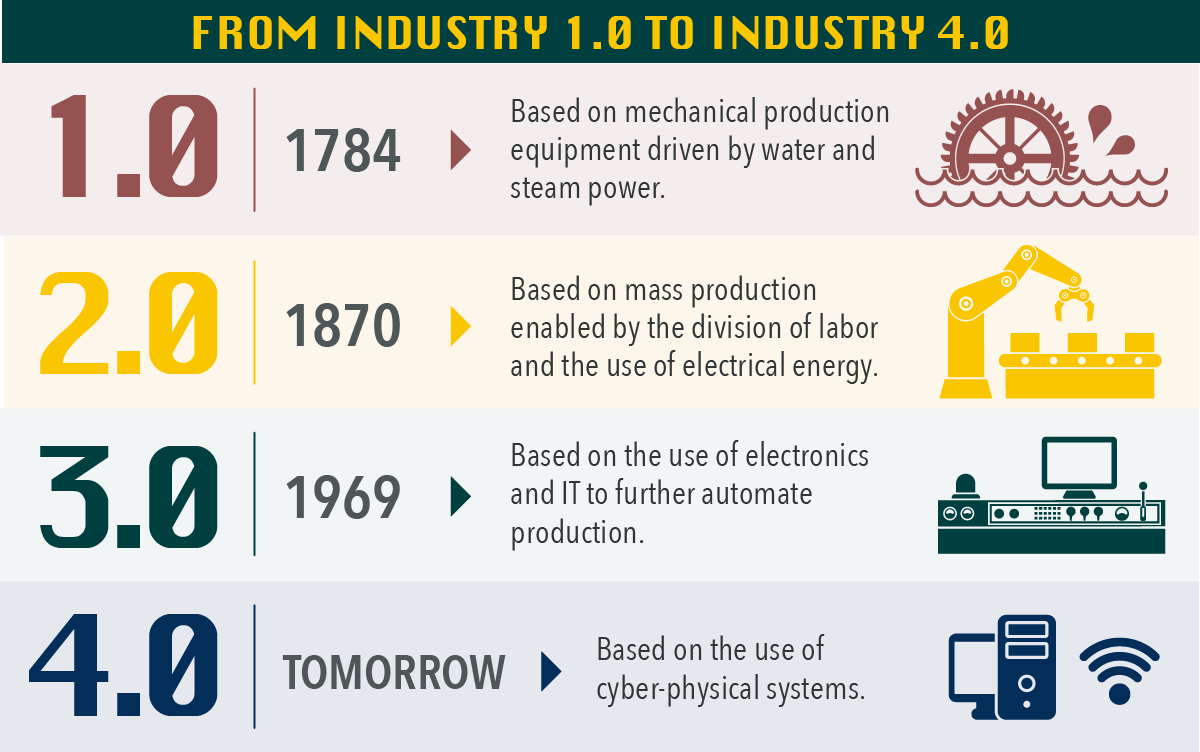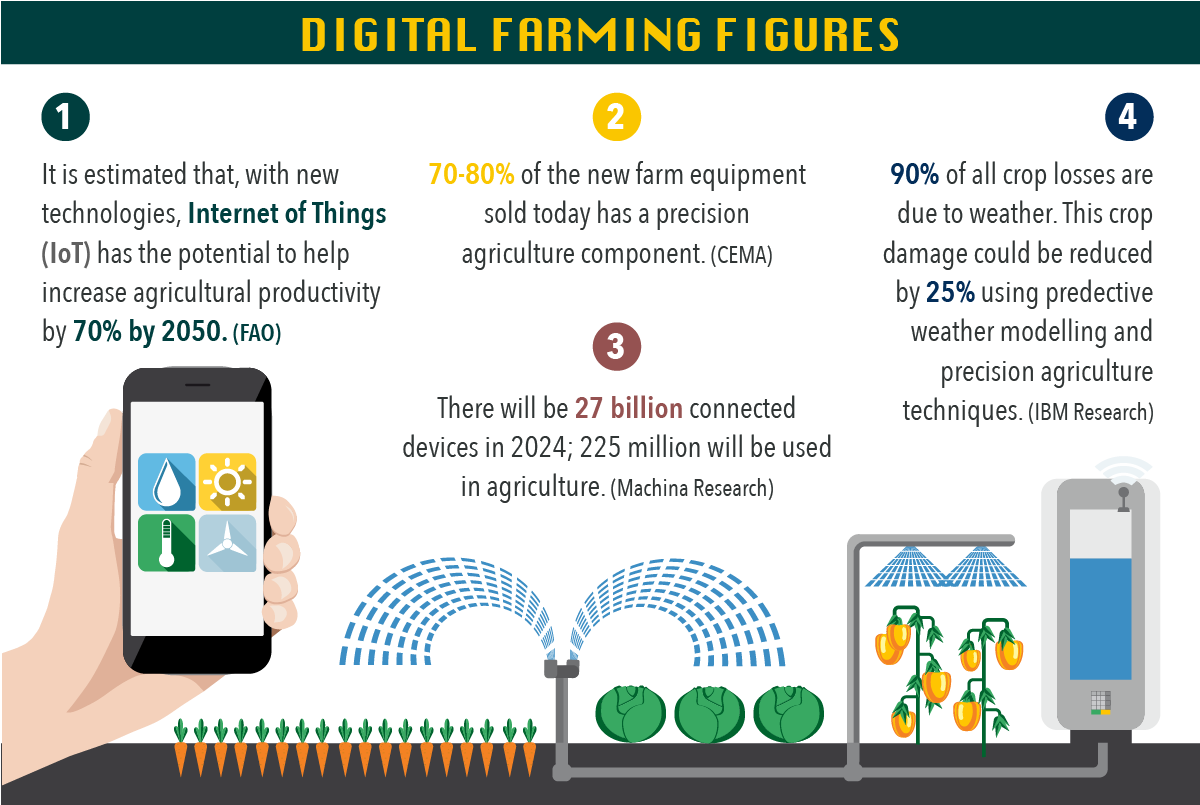With the world’s population expected to reach 9.7 billion people by 2050, farmers will need to produce more food to feed the world over the next 35 years than in the last 2000 years! According to the World Economic Forum (WEF), a quarter of all food, measured by calorie content, is wasted from “farm to fork”, and 8% of this loss occurs in the upstream value chain. As the primary source of food, agriculture contributes significantly to arable land depletion and environmental degradation as a result of the prolific use of fertilizers, pesticides and other chemical inputs. The International Food Policy Research Institute indicates that 5 to 10 million hectares of cropland are lost annually due to severe degradation, and that crop yields are continually decreasing over a much larger area. Feeding the world in 2050 will require a 70% increase in overall food production because of population growth and changes in consumption driven by an expanding middle class. All aspects of industry during the Fourth Industrial Revolution must revolve around not only increasing output, but minimizing impact on the environment – a fact that hasn’t been taken into consideration during previous industrial revolutions and is key to human evolution and survival.

Source: Genesis Nanotechnology
Building on the Third Digital Revolution, which started in the middle of the 20th century, the Fourth Industrial Revolution is characterized by a fusion of technologies that is blurring the lines between the physical, digital, and biological spheres. Technologies that will allow the development of autonomous mass transportation systems, remote medical assistance, nanotechnology, biotechnology and other developments promise to change the way the world works and, more importantly, the way humans function. New developments such as bioengineering, wearable robotic systems and augmented reality devices have the power to change the way we act, socialize and even relate to each other.
Compared to other industries, the agricultural sector has been slow to implement and take advantage of the variety of technologies that are powering the Fourth Industrial Revolution. Fragmented rural markets, poor infrastructure and heavy regulatory burdens have raised costs for food systems, while revenue has been constrained by market dynamics and the increasing disparity between commercial farming and small farm owners. According to a WEF report, total investment in 1,000 food system-focused start-ups since 2010 totaled a paltry $14 billion US dollars, a tiny amount compared to investments made in other sectors. The Business and Sustainable Development Commission estimates that opportunities to create value for the United Nations’ Sustainable Development Goals in agri-food value chains could potentially reach $2.3 trillion US dollars annually by 2030.
Emerging concepts like precision agriculture, which involves the use of robotics, sensors, drones, farm management software, biological inputs, gene editing and cloning, biological data, artificial intelligence and machine learning, 3D printing and blockchain could lead not only to a more efficient agricultural system, but also to one that reduces waste while being more economically and environmentally viable.
Broadly defined as making the practices of agriculture more accurate across all areas, precision farming, which integrates data and analytics with crop science to enable scientific farming decisions, is becoming increasingly prevalent around the world. Leveraging technologies such as GPS, soil sensors, weather data and IoT for decisions related to fertilizer application, irrigation, harvesting time and seed spacing, precision farming drives substantial yield gains while optimizing resource usage in order to determine precise applications of agricultural inputs. The precision farming market, which is expected to reach $10.23 billion US dollars by 2025 at a CAGR of 14.2%, comprises popular emerging technologies including:
- Robotics: Machines can carry out everything from nursery planting and crop seeding to autonomous tractors that can detect and calculate necessary application doses for specific areas in need of agricultural inputs. Robotics not only enable data production but also prevent crop loss, optimize efficiency, monitor ecosystems and prevent pollution.
- Hydroponics: The realization that nutrient water alone can be used to grow plants in a soil-less medium or aquatic environment has led to new methods of growing food indoors.
- Vertical farming: The practice of producing food in vertically stacked layers through the use of hydroponics, allows the growth of certain plants inside facilities without the use of chemicals. These facilities may also be monitored entirely by robots.
- Bio-Farming: The biological approach to farming is based on measuring the microbial life in the soil and then applying the microbes, nutrients and compost tea, that the soil needs to regain its balance. This is accomplished by using only chemical-free, natural and organics inputs, and preventing monoculture on arable land.

Source: Bayer
The first Green Revolution saved millions from famine in the mid 20th century, however, this approach to the global food supply is no longer sustainable. The purpose of sustainable agriculture is to meet society’s present food needs while employing methods that guarantee future generations will be able to meet their own needs as well. The technology brought forth by the Fourth Industrial Revolution can help achieve these goals by incorporating innovative technologies in order to achieve maximum efficiency and usage of resources in a sustainable and environmentally friendly manner.
Technologies depend on an interconnected world using the internet. While the number of internet users quadrupled to over 40% of the world’s population from 2005 to 2015, over 4 billion people remain without internet access. This makes precision agriculture a complex issue in rural farming communities, where many technological advances are still out of reach. However, the world is becoming increasingly connected, and better technology and financing are contributing to improving the current situation in rural and developing world communities. An example of this is the development of technologies that will facilitate the use of IoT by extending battery lives and improving the mobile network in areas where connectivity was once sparse. With technology and the internet becoming increasingly ingrained in society, the world can no longer function without it, as it has become paramount to developing and improving society.
We at Primal are active proponents of innovation and the technologies of the Fourth Industrial Revolution. We use precision farming techniques across our plantations, and deploy drones and smart irrigation systems, in order to optimize input application by interpreting real-time data. As part of the UN Global Compact, we are committed to principles 7,8 and 9 which require companies to find the best possible practices and technologies in order to have a responsible approach towards the environment. This, combined with our team’s in-depth knowledge of sustainable agricultural techniques, allows us to grow the healthiest neem trees. We understand that the future of agriculture involves networking solutions and community support, and we provide assistance to local farmers and communities in order to share our knowledge and resources. In addition to this, we have created an induction training manual, as part of our mission to ensure maximum safety and a healthy and positive work environment for all our employees.
The Fourth Industrial Revolution will be defined by the birth of new business models and the disruption of incumbents. At Primal, it is our mission to remain at the forefront of innovation and sustainability through our People, Planet, Profit synergy. We believe that a sustainable approach is the only way to satisfy the most fundamental requirements for life, while securing a safe and prosperous future for all.